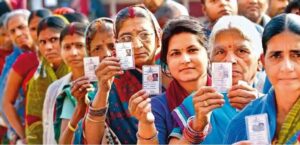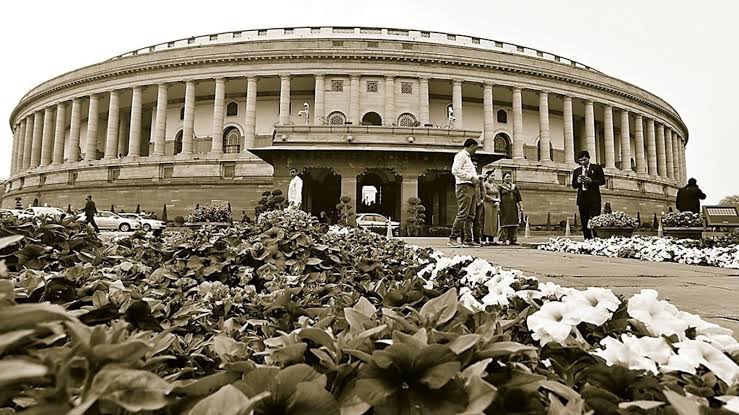As the world’s largest democracy, India’s electoral saga stands as a resounding testament to the indomitable spirit of its people. From the fledgling days of Independence, when an overwhelming 85% of the eligible populace grappled with illiteracy, the nation has embarked on a transformative odyssey, witnessing a profound shift in the psyche of its electors and a steadily rising tide of voter participation.
In the early years following the nation’s birth in 1947, the daunting task of identifying, naming, and registering voters was akin to scaling an insurmountable peak. Yet, the seeds of democracy had been sown, and with each passing election, those seeds took root, gradually blossoming into a vibrant and engaged electorate.
The 1951 general elections marked the beginning of this odyssey, with a modest 44.87% voter turnout from an electorate of over 17.32 crore. While the numbers may seem unimpressive by today’s standards, they represented the first steps of a nascent nation, still finding its footing on the path of self-governance.


women voter
As the decades unfolded, a remarkable transformation began to take shape. The 1962 elections witnessed a significant surge, with the voter turnout climbing to 55.42%, a clear indication that the democratic flame was igniting within the hearts and minds of the Indian populace.
The 1967 polls further fueled this upward trajectory, with a resounding 61.04% of the electorate, numbering over 25.02 crore, exercising their franchise, a figure that would have been unimaginable just a few years prior. It was as if the nation had collectively awakened to the power and responsibility that democracy entailed.
However, the true turning point came in 1984, when a staggering 63.56% of the electorate, numbering nearly 37.95 crore, cast their ballots, shattering previous records and setting a new benchmark for voter engagement.
From that pivotal moment onwards, India’s electoral journey has been one of consistent growth and unwavering determination. The 1989 elections witnessed a turnout of 61.95%, with over 49.89 crore electors making their voices heard, while the subsequent polls in 1991 and 1996 hovered around the 57% mark, with electorates of 49.84 crore and 59.26 crore respectively, a testament to the nation’s steadfast commitment to the democratic process.
Yet, the true crowning moment came in the 2014 general elections, when a remarkable 66.44% of the electorate, comprising over 83.41 crore individuals, made their voices heard at the ballot box. This was a watershed moment, a resounding affirmation that the Indian electorate had truly come of age, embracing their democratic rights and responsibilities with fervor and conviction.
The 2019 elections further solidified this trend, with a record-breaking 67.4% voter turnout, surpassing even the lofty heights of 2014. Of the staggering 91.05 crore electors, over 61.37 crore cast their ballots, a moment of national pride, a resounding declaration that India’s democracy had truly taken root, transcending boundaries of caste, creed, and religion, united by the shared belief in the power of the ballot.
This remarkable journey, however, is not merely a story of statistics and numbers. It is a narrative woven from the threads of hope, determination, and the indomitable spirit of a nation that has risen from the ashes of colonialism to become a shining beacon of democracy on the global stage.
Behind each percentage point lies a tapestry of stories, of individuals who have braved insurmountable odds to exercise their right to choose their leaders. From the remote villages of the Himalayas, where voters traverse treacherous terrain to reach the polling booths, to the teeming metropolises where the cacophony of democracy resonates through every alleyway, the Indian electorate has proven time and again that their voices cannot be silenced.
This unwavering commitment to the democratic process is not merely a matter of civic duty; it is a profound expression of the nation’s collective aspirations, a resounding rejection of the shackles of oppression that once bound its people.
As India continues to stride forward, its electoral journey serves as a powerful reminder of the transformative power of democracy. It is a story that transcends boundaries, resonating with nations across the globe that are grappling with the complexities of self-governance and the delicate balance between individual freedoms and collective responsibility.
Yet, this odyssey is far from over. With each passing election, the nation’s electorate grows larger, more diverse, and more cognizant of the pivotal role they play in shaping the nation’s destiny. The challenges that lie ahead are manifold, from combating misinformation and ensuring transparent and fair electoral processes, to addressing the persistent socio-economic disparities that threaten to undermine the democratic values on which this great nation was built.
However, if the past is any indication, India’s unwavering spirit and its people’s resilience will undoubtedly prevail. For in the heart of every Indian, there beats a rhythm of hope, a belief in the power of the ballot to create a better tomorrow, a future where the dreams of a billion souls can find their voice and their aspirations can take flight.
As the world watches with bated breath, India’s electoral journey continues to unfold, a compelling saga that captivates the imagination and inspires nations across the globe. It is a story that reminds us that democracy is not merely a system of governance, but a living, breathing embodiment of the human spirit, a testament to the indomitable resilience of a people who have chosen to shape their destiny with the power of their collective will.
In the end, India’s voter turnout saga is not just a chronicle of numbers and statistics; it is a poetic tapestry woven from the threads of hope, determination, and the unwavering belief that in the heart of every citizen lies the power to change the course of history.






